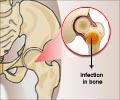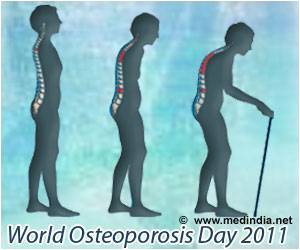
‘The antimicrobial properties of silver combined with a biodegradable scaffold can be seeded with bone-forming stem cells to offer a potential implant system for treating and preventing bone infection.’
Tweet it Now
Mahsa Mohiti-Asli and coauthors from University of North
Carolina at Chapel Hill, North Carolina State University (Raleigh),
Silpakorn University (Nakornpathom, Thailand), and University of
Missouri (Columbia), present an experiment in which they seeded
bone-forming stem cells on three-dimensional scaffolds either with or
without MRSA. The researchers assessed bacterial biofilm formation to determine the effect of silver ions on bone infection (osteomyelitis). They report their findings in the article entitled "Evaluation of Silver Ion-Releasing Scaffolds in a 3D Coculture System of MRSA and Human Adipose-Derived Stem Cells for Their Potential Use in Treatment or Prevention of Osteomyelitis."
"Hybrid therapeutic approaches such as this combination of a regenerative and anti-infective platform are transforming our attack on complex musculoskeletal diseases," says Co-Editor-in-Chief Peter C. Johnson, Principal, MedSurgPI, LLC and President and CEO, Scintellix, LLC, Raleigh, NC.
Research reported in this publication was supported by the Clinical and Translational Science Awards (CTSA) program of the National Institutes of Health under grant numbers 550KR71418 and 550KR61325, and the National Institute of Biomedical Imaging and Bioengineering under grant number 1R03EB008790. The content is solely the responsibility of the authors and does not necessarily represent the official views of the National Institutes of Health.
Source-Eurekalert













